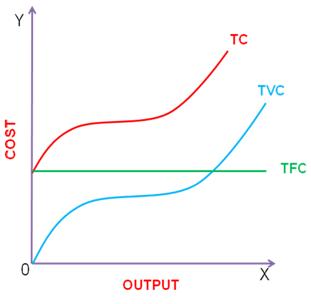Economics : 2012 : CBSE : [All India] : Set III
To Access the full content, Please Purchase
-
Q1
What is the behaviour of Marginal Revenue in a market in which a firm can sell any quantity of the output it produces at a given price?
Marks:1View AnswerAnswer:
MR curve is a horizontal straight line parallel to X-axis and MR is equal to price.
-
Q2
What is a price-maker firm?
Marks:1View AnswerAnswer:
Price maker firm is that firm who decide the price of a commodity.
-
Q3
Give one reason for a shift in demand curve.
Marks:1View AnswerAnswer:
Change in income
-
Q4
What is the behaviour of Total Variable Cost, as output increases?
Marks:1View AnswerAnswer:
Total variable costs increases as output is increased.
-
Q5
Define microeconomics.
Marks:1View AnswerAnswer:
Microeconomics deals with the individual parts of the economic system such as individual households, individual firms or industries.
-
Q6
What is opportunity cost? Explain with the help of an example.
Marks:3View AnswerAnswer:
The opportunity cost of an activity is equal to the value of next best alternative forgone. In other word, opportunity cost reflects the benefit we give up to select the most preferred choice. Example: a labour gets 100 per day for his work in industry but for that he foregoes 80 which he would have got for working in agriculture.
-
Q7
Draw Total Variable Cost, Total Cost, and Total Fixed Cost curves in a single diagram.
Marks:3View AnswerAnswer:

-
Q8
Explain the implications of large number of sellers in a perfectly competitive market.
Marks:3View AnswerAnswer:
Implication of large number of sellers in the market is that the share of each seller in total market supply is so small that no single seller can influence the price. As result each firm is said to be price taker in perfect competition.
-
Q9
Explain why there are only a few firms in an oligopoly market.
Marks:3View AnswerAnswer:
In an oligopoly market, only a few firms exist so that each firm produces a substantial part of total output of the industry. The number of firms is so small that each seller knows that he can influence the price by his own action and he can provoke opponent firms to react.
-
Q10
A producer borrows money and starts a business. He himself looks after the business. Identify implicit and explicit costs from this information.
Marks:3View AnswerAnswer:
In the above case, service of producer comes under implicit costs. As we know that implicit costs of self- owned or self-employed resources. Since, he borrows money for start the business, so interest payment on money comes under explicit cost. Explicit costs are those cash payments which firms make to outsiders for their services and goods.



